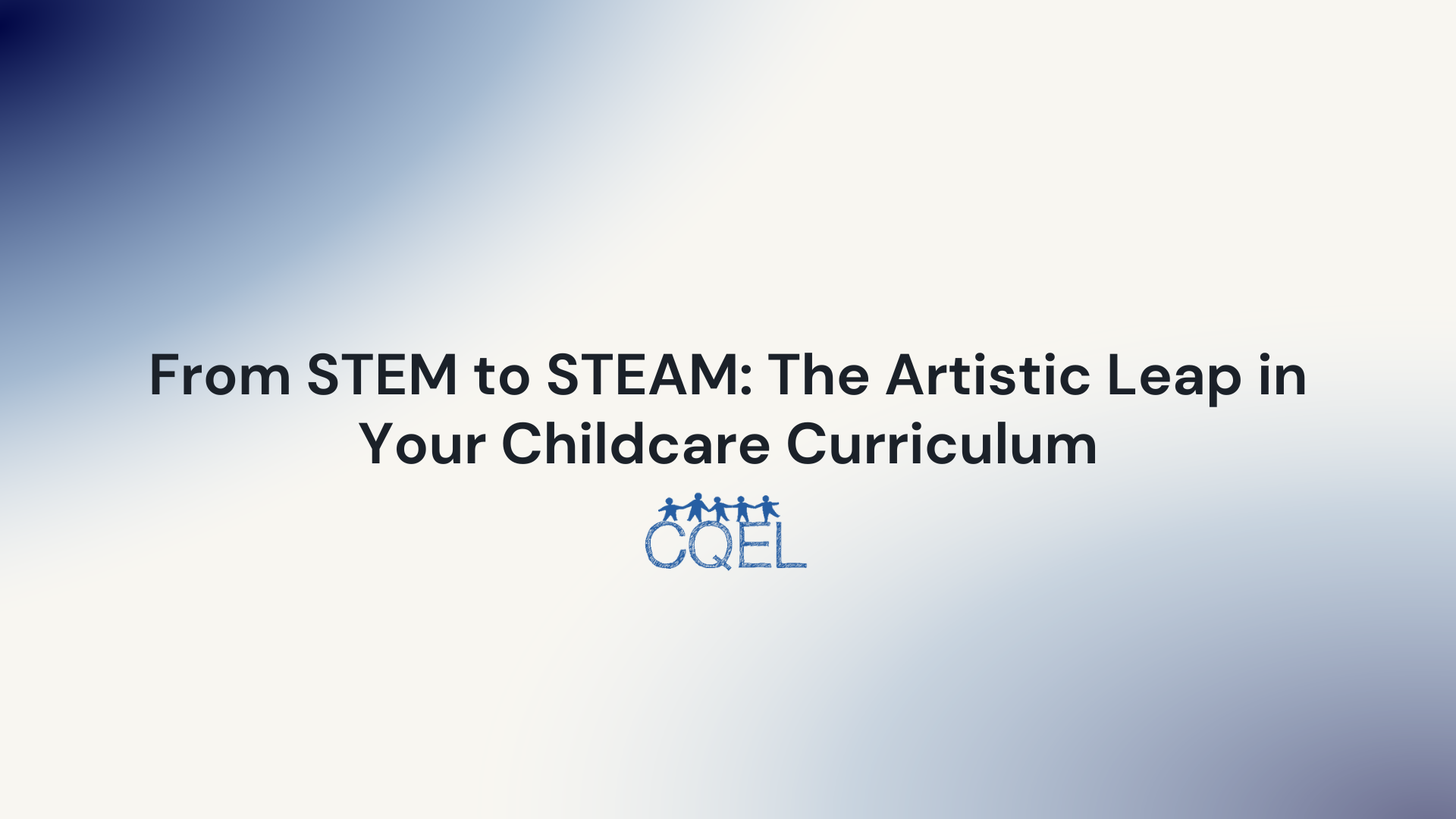From STEM to STEAM: The Artistic Leap in Your Childcare Curriculum
Integrating arts into the STEM curriculum can enhance creativity, improve problem-solving skills, and boost the overall learning experience. But how can we effectively incorporate STEAM in early childcare?

In an era defined by rapid technological advancement, the value of STEM (Science, Technology, Engineering, and Math) education is undeniable. However, to foster holistic development, it's essential to add an "A" for Arts into the mix, transforming STEM into STEAM. Integrating arts into the STEM curriculum can enhance creativity, improve problem-solving skills, and boost the overall learning experience. But how can we effectively incorporate STEAM in early childcare? This article sheds light on practical strategies to weave STEAM into the fabric of your childcare curriculum, with age-appropriate ideas for babies up to five-year-olds.
Why STEAM?
Before we dive into the 'how', it's worth understanding the 'why'. STEAM education empowers children to explore, experiment, and express themselves, thereby fostering critical thinking, collaboration, and creativity. The STEM to STEAM movement led by the Rhode Island School of Design provides a wealth of resources explaining the philosophy and benefits of this integrated approach to learning.
STEAM for Babies
Even the youngest children can embark on the STEAM journey. Babies can be introduced to the concept of cause and effect through playful activities such as playing with water or stacking blocks. A resource like Zero to Three's tips for STEM with infants can be highly beneficial to ensure appropriate engagement at this tender age.
STEAM for Toddlers
Toddlers can delve a bit deeper into the world of STEAM. Simple art projects using various materials can encourage their sensory exploration, while interactive storybooks can stimulate their imagination. The resource PBS Parents: Fun STEAM Activities lists fun and easy activities suitable for toddlers that blend science, technology, engineering, arts, and math.
STEAM for Preschoolers
As children grow, so can the complexity of their STEAM activities. Preschoolers can engage in more structured experiments, such as growing plants or building simple structures. They can also start to use digital tools for creative expression, like painting apps. The book "STEAM Play & Learn: 20 fun step-by-step preschool projects about science, technology, engineering, arts, and math!" by Ana Dziengel is an excellent guide, brimming with activities tailored for preschoolers.
STEAM for Children Aged 4-5
As children approach school age, they can take on more challenging STEAM projects. They can engage in coding activities with kid-friendly software, explore simple robotics, or use more advanced art techniques in their projects. Websites such as Education.com offer a range of age-appropriate STEAM activities that can challenge and excite these older preschoolers.
Encouraging a STEAM Mindset
Integrating STEAM into your childcare program isn't just about activities; it's also about fostering a STEAM mindset. Encourage children to ask questions, solve problems, and express their creativity. Resources like NAEYC's article on encouraging a STEM mindset can provide useful tips on this aspect.
The STEAM-powered Childcare Program
Incorporating STEAM into your childcare curriculum doesn't need to be complex or intimidating. By using age-appropriate activities and fostering a STEAM mindset, you can stimulate children's curiosity, creativity, and critical thinking skills. Whether it's a baby exploring with blocks, a toddler creating art with mixed materials, or a five-year-old coding their first digital animation, every child can benefit from the rich and diverse world of STEAM learning. As we move from STEM to STEAM, we are not just adding an 'A' for Arts; we're adding a new dimension of creativity and innovation to our children's education, empowering them to thrive in a technologically advanced society.
